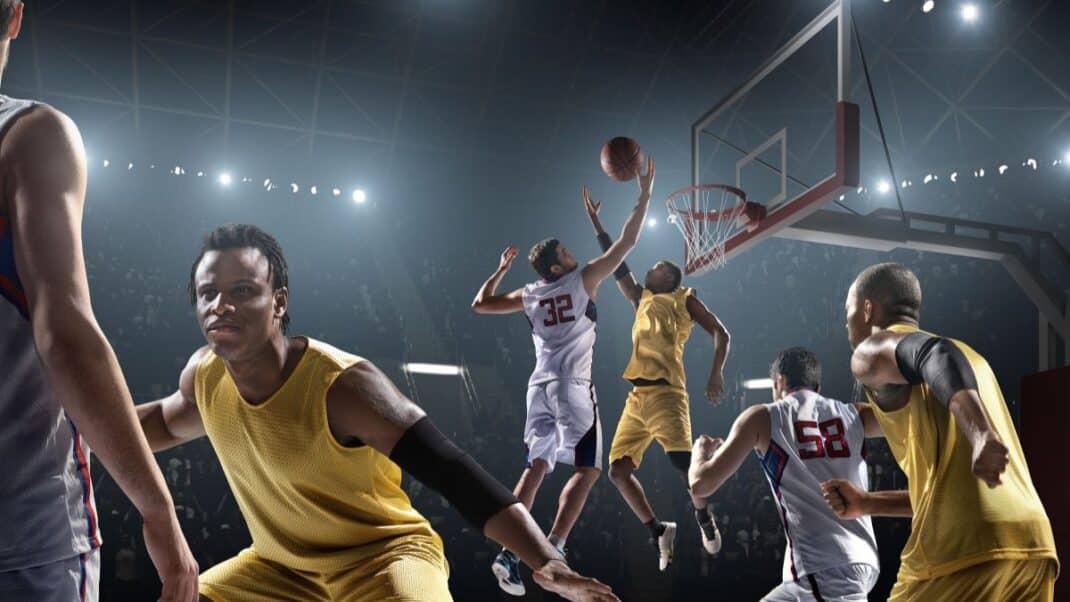Whole-Body Training: Warding Patterns

Observing sport is a great way to appreciate human structure and function. High-level athletes teach us a lot about optimal performance—and even dysfunction. Watching skilled athletic movement at the collegiate or professional level stimulates us to ask questions and scrutinize our existing training methods. This article identifies a need to introduce warding patterns as part of a well-balanced training and conditioning program. Practicing warding patterns elicits adaptations that are authentic to our physiology and can transfer to sports and daily activities.
What Is a Warding Pattern?
When used as a verb, to ward means “to guard, protect, put off or create space.”
From a mechanical perspective, warding patterns can be defined as “the physiological state of maintaining optimal body-wide tension against an external force while producing gross movement patterns” (Institute of Motion 2010).
Warding Pattern Drills
Warding patterns are categorized into three thresholds. Each threshold has six guidelines for proper regression and progression. Threshold one is beginner level, threshold two is intermediate, and threshold three is advanced.
These six guidelines govern all drills:
- Orientation: where the athlete/client is in a field of gravity. For instance, standing, seated, kneeling, side-lying, etc., are all different orientations to gravity, and each one challenges the body differently.
- Action: what gross movement pattern the individual is performing (if any). There are three broad choices:
- stationary force (push, pull, rotate)
- level change (squat, lunge, bend; vertical jump or hop)
- locomotion (walk, run, shuffle, skip, jump, hop, carioca, etc.)
- Device: the tool chosen to load the movement. Examples include barbells, dumbbells, kettlebells, sandbells, sandbags, Bulgarian bag, ViPR™, cable, bungee, chains, weight vest, sled, body weight, another person and many more.
- Footprint: where the feet are positioned and where they are moving. For example, a client can place his feet shoulder width apart, staggered, balanced on one leg, etc. Foot position and movement are important because they influence all ascending reactions.
- Handprint: where the hands are positioned and where they are moving. For example, a client can place her hands at chest height, waist height or overhead. She can push or pull bilaterally, unilaterally or in a reciprocating manner. Moving the hands in different directions stimulates varied lines of pull, which benefits human tissue. Handprint is important because it influences all descending reactions affecting the body.
- Threshold: acute variable manipulation. This is a personal trainer’s last check and balance to make sure drills are programmed appropriately for each individual. Acute variables include volume, tempo, load, speed, range of motion (ROM), complexity of motion, base of support, surface and many more. Essentially, threshold includes all the variables you can manipulate.
It is extremely important to program proper training stress application so that the individual limits his or her risk for injury while maximizing structural adaptations.
Threshold One: Beginner
Threshold-one introduces a low-level neural, mechanical and metabolic challenge. It is extremely important that the individual begin to acquire neural sensitivity (on and off muscle action) with low movement complexity and at little metabolic cost. Low neural and mechanical challenge imposes a tolerable stress as one begins warding patterns.
Here is an example of a threshold one warding pattern.
Threshold-One Warding Pattern #1
Prerequisite. If a client exhibits upper and lower crossed syndrome, initiate a corrective strategy prior to performing this drill.
Preparation. Choose an anchor on which you can ward down and up. Using a partner may not necessarily be the best option. Equipment and door frames are suitable anchors.
Movement
- Stand tall with feet shoulder width apart.
- Raise one arm to shoulder height, and place the hand on the anchor (as shown).
- Push medially at shoulder height and hold for 2 seconds.
- Release, and repeat the sequence with the opposite hand.
- Descend into a squat and perform the pattern again while maintaining a level change.
- Perform a second descent into the squat if desired.
- Repeat the entire sequence as you stand back up.
Benefits of This Drill
- It engages the body’s stability mechanism and teaches sensitivity to up and down regulation.
- It is a great way to introduce vertical core training.
Regression
- Perform without the squat.
Progression
- Assume a staggered stance.
For more examples of warding patterns for beginning, intermediate and advanced levels, please see “Whole-Body Training: Warding Patterns” in the online IDEA Library or in the April 2012 issue of IDEA Fitness Journal.
Michol Dalcourt
Michol Dalcourt is an educator, author, trainer, inventor and an industry leader in the areas of human movement and performance training. He is a director for the Institute of Motion, adjunct professor at the University of San Francisco in sports science and co-founder of PTA Global certification. Michol is also the inventor of ViPR™, a fitness tool being rolled out in top clubs and with professional athletic teams. His innovative techniques have been adopted by many of the top international fitness certification bodies.





